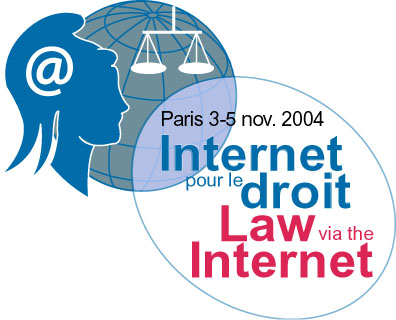Home > 6th Conference on Computerisation of Law via the Internet > The papers > 3- Friday, November 5th : Case Law and Doctrines - regulations of the (...) > Digital Content in Civil Court Proceedings - A Proposed Framework of (...)
 Digital Content in Civil Court Proceedings - A Proposed Framework of Regulation with a View to Promoting Access to Justice
Digital Content in Civil Court Proceedings - A Proposed Framework of Regulation with a View to Promoting Access to Justice
Friday 5 November 2004, by
All the versions of this article: [English] [français]
Mr. Barry Kwok Hung LEE, Senior Judiciary Executive, IT Management Unit of the Hong Kong Judiciary Administration, University of Hong Kong - China
The Hong Kong Civil Justice System faces challenges of
high costs, delay and complex procedure and these problems pose obstacle to access to justice. Cornerstones for access to justice include lawyers, free dissemination of law and the judiciary. Now, lawyers are not practically accessible to all individuals in the society owing to structural failure of the legal system. Law develops its complexity with the society; nonetheless, dissemination technology of law is not as
developed as sufficiently to satisfy demands of the society. The court is in a limbo in which impartiality and fairness to all parties constrain its role to assist unrepresented litigants.
Disruptive legal information technology and emerging Electronic Legal Information (ELI) may arise as the 4^th cornerstone in face of the challengs. Electronic Legal Information (ELI) refers to (i) an integrated Electronic Law governing civil procedures and other areas of substantive law, (ii) electronic legal document filings and evidence and
(iii) electronic court case status information. ELI is transforming the existing cornerstones to their virtual existences, which take on new capability to face the challenges of high costs, delay and complexity.
To promote access to civil justice, disruptive legal information technology should be adopted and a positive right to access ELI be established. For unrepresented litigants, the use of ELI will put them in a better position to assess if legal assistance should be sought or it would be better to remain unrepresented. Should they choose to be unrepresented, ELI provides ease of reference to law and integrates law from their perspective. For represented litigants, they will have a greater access to information concerning activity of court proceedings and they will be in a better position to push progress with the availability of case status information and electronic court document filings.
Court should not be obstructed by the fair to all prejudice in its efforts to provide ELI for parties to the proceedings. Court should also provide and maintain options of court services for those who have difficulty in using ELI.
To prevent misuse of ELI, court should formulate an access policy. Secure authentication procedures, which will only grant access to authorized users only, and audit procedures, which can trace accountability of misuse, should be established. The ELI (Digital Content) protection technology should be adopted to avoid the risk of intentional or accidental disclosure of information to the non-parties
of the proceedings. Access agreement should be used to limit use purposes.
